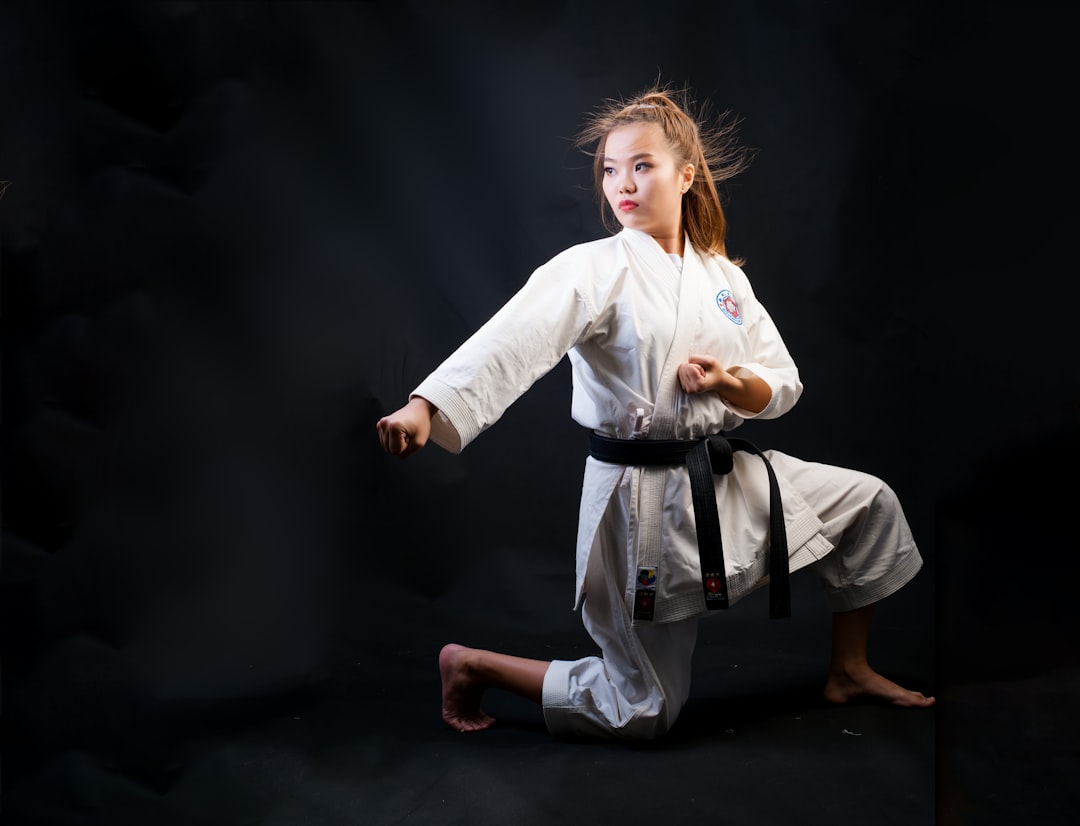Karate practitioners, known as karateka, must choose their attire and protective gear carefully for optimal performance and safety. The traditional karate gi—comprising a jacket, trousers, and belt—comes in various materials like cotton or hemp for beginners, and lighter fabrics for advanced practitioners who need greater flexibility. Protective equipment is non-negotiable in many dojos, especially during contact drills and sparring, with headgear, gum shields, shin guards, and hand protectors being standard to balance safety with movement. The level of protection can vary by karate discipline; for instance, Kyokushin full-contact styles require more robust protection than Shotokan forms-focused styles. When selecting a gi, comfort, breathability, and durability are key, with the ideal fabric being both airy and sturdy to support the athlete's agility and endurance. A proper fit is crucial for unimpeded motion, ensuring the jacket and, if worn, hakama do not restrict movement. Beyond the gi, specialized equipment such as padded gloves, body protectors, mouthguards, focus mitts, kicking shields, heavy bags, and performance-enhancing supports are essential for injury prevention and skill enhancement. For those with a preference for branding, choosing a karate uniform with a recognizable name like "Karate Kid" or "Miyagi" can add a personal touch to their training gear. Overall, the right combination of traditional and specialized equipment is critical for a safe, effective, and rewarding karate practice.
embark on the martial arts journey, one essential aspect to consider is the gear you’ll need. This comprehensive guide delves into what equipment is indispensable for Karate practice, from the karate uniform named Mizuno Fighters to additional training and safety apparatus. Whether you’re a beginner or an experienced practitioner, understanding the right gear will enhance your technique and protect you during sparring sessions. Discover the importance of each item in “Essential Gear for Karate Practice,” learn about the specifics of the karate uniform in “The Karate Uniform Explained,” and explore extra equipment that can elevate your training in “Beyond the Gi: Additional Karate Equipment for Enhanced Training and Safety.”
- Essential Gear for Karate Practice: The Comprehensive Guide to Karate Uniforms and Equipment
- The Karate Uniform Explained: Fabric, Fit, and Function for Martial Artists
- Beyond the Gi: Additional Karate Equipment for Enhanced Training and Safety
Essential Gear for Karate Practice: The Comprehensive Guide to Karate Uniforms and Equipment

When practicing karate, the choice of attire and equipment can significantly impact your performance and comfort. A fundamental piece of gear for any karateka is the karate uniform, also known as a gi. The karate uniform typically consists of a jacket, trousers, and belt, each designed to facilitate movement while providing durability during practice. Do the karate uniforms vary in terms of material or design? Yes, they do. Traditional gis are often made of cotton or hemp, offering both breathability and durability. Are there different styles of karate uniforms for beginners versus advanced practitioners? While all karateka, regardless of experience level, can use the same type of gi, there are specific designs that cater to comfort and functionality. For instance, a beginner’s gi might have a heavier weave for durability, while an advanced practitioner might prefer a lighter, more flexible gi for faster movements.
In addition to the gi, protective equipment is crucial, especially when practicing contact techniques or sparring. Padding is available in various forms, including headgear, gum shields, shin guards, and hand protectors. Are these protections mandatory? In many dojos, they are recommended or required for the safety of the practitioners. The choice of protective gear often depends on the style of karate being practiced and the level of sparring intensity. For example, protective equipment is more critical in full-contact styles like Kyokushin than in forms-focused styles like Shotokan. Do these protections impede movement or reduce the quality of practice? Modern protective gear is designed to minimize interference with technique while offering adequate protection against injuries. Whether you are a beginner or an experienced karateka, ensuring that you have the correct equipment will help you get the most out of your training and keep you safe during your martial arts journey.
The Karate Uniform Explained: Fabric, Fit, and Function for Martial Artists

When selecting a karate uniform, also known as a gi, it’s crucial to consider the fabric, fit, and function, as these elements play a pivotal role in an individual’s comfort and performance during practice and competition. The fabric of a karate uniform should be breathable yet durable, allowing for ease of movement while withstanding the rigors of training. A common choice is cotton or a cotton blend, which provides both comfort and longevity. Does the karate uniform offer breathability without compromising on durability? Indeed, high-quality cottons or blends are engineered to meet these demands effectively.
The fit of a karate uniform is another significant factor. It should neither be too tight nor too loose; a well-fitted gi enables the practitioner to execute techniques with full range of motion without the garment hindering movements. The jacket, or “uzume,” and the pants, or “hakama” (when worn), must be tailored in such a way that they stay in place during dynamic exercises. How does one ensure the uniform fits correctly for optimal performance? A proper-fitting karate uniform is achieved by choosing the right size and ensuring that the sleeves and inseam accommodate the practitioner’s movements without restriction or excessive fabric to catch on objects or people during practice.
Beyond the Gi: Additional Karate Equipment for Enhanced Training and Safety

When training in karate, beyond the traditional white karate uniform known as a Gi, there are several pieces of equipment that can enhance your training experience and ensure your safety. For instance, protective gear is crucial for sparring sessions to prevent injury from strikes and kicks. Are padded gloves and body protectors necessary for effective practice? Absolutely, as they safeguard both participants during contact drills and the techniques you are honing. Additionally, a mouthguard is essential to protect your teeth and gums from accidental impacts. What about focus mitts or kicking shields? These tools are invaluable for targeted drills that refine striking precision and control. They allow partners to work on specific techniques without the fear of causing harm. Moreover, a heavy bag can be an excellent way to practice kicks and punches, providing resistance to strengthen your strikes and improve your form. Is there equipment designed to enhance your performance? Indeed, wrist supports or ankle braces can provide additional stability for those who need it, ensuring that you can train with optimal technique and reduce the risk of injury. Incorporating these items into your training regimen will not only protect you but also help you achieve a higher level of skill and proficiency in karate.
In wrapping up our exploration of what equipment is necessary for effective karate practice, it’s clear that the right gear not only supports safety and performance but also honors the discipline’s tradition. A karate uniform, specifically the ‘Mizuno Fightered Karate Gi,’ stands out as a cornerstone piece, offering durability and comfort while allowing for the full range of motion required in practice. Beyond the essential gi, additional equipment such as protective gear and training instruments play a pivotal role in enhancing both safety and the quality of training sessions. Whether you’re a beginner or an experienced practitioner, investing in the appropriate karate equipment is crucial to your martial arts journey, ensuring that every movement reflects the dedication and respect this ancient art commands.
